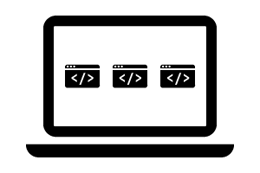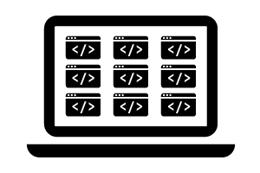IDENTIFY RISKS BEFORE ATTACKERS DO
Penetration Testing
“If you can’t see it, you can’t defend against it.™"
From vulnerability assessments to penetration tests to red team engagements, Cybersafe Solutions’ technical team expertly customizes assessments to fit your needs and budget.
Why Should Organizations Perform Network Penetration Testing?
The purpose of performing network penetration testing, also known as ethical hacking, is to identify vulnerabilities and security flaws in a network's infrastructure, applications, and systems that may be exploited by attackers to gain unauthorized access, steal sensitive data, disrupt services, or cause other types of damage.
By simulating real-world attacks, network penetration testing helps organizations:
- Assess their security posture
- Identify weaknesses and prioritize remediation efforts
- Ensure compliance with regulatory requirements.
- Help improve incident response capabilities by identifying potential attack scenarios and providing recommendations to mitigate or prevent them.
Overall, network penetration testing plays a critical role in helping organizations proactively manage their cybersecurity risks and protect their valuable assets and data from cyber threats.
Internal
An internal penetration test is a type of security assessment in which a tester simulates an attack on an organization's network from within the network itself, typically from a trusted location such as an employee's computer. The goal of an internal penetration test is to identify vulnerabilities that could be exploited by an attacker who has gained access to the organization's network. The tester may use a variety of tools and techniques to identify vulnerabilities and attempt to exploit them to gain access to sensitive information.
External
An external penetration test is a type of security assessment in which a tester simulates an attack on an organization's network from outside the network, typically from the internet. The goal of an external penetration test is to identify vulnerabilities that could be exploited by an attacker who does not have authorized access to the organization's network. The tester may use a variety of tools and techniques to identify vulnerabilities and attempt to exploit them to gain access to sensitive information.
Combined
By performing both types of penetration tests, an organization can get a complete picture of its security posture and identify vulnerabilities that may be missed by only performing one type of test. This can help the organization better understand its risks and take steps to improve its security defenses.
Customized
There are several types of penetration tests, each with its own focus and scope. By taking a customized approach to penetration testing, organizations can choose which type(s) of test to conduct based on their specific needs and risks. This can be a combination of network, web application, mobile application, wireless, social engineering, red team or physical penetration testing. It is important to note that some types of testing, such as social engineering or physical penetration testing, may require additional legal or ethical considerations.
Penetration Tests: Manual Versus Automated
Both manual and automated penetration testing have their pros and cons. Manual testing is more thorough and customizable but is expensive, time-consuming, and subjective. Automated testing is faster, consistent, scalable, and less expensive, but lacks creative thinking and problem solving. The best approach depends on the specific needs of an organization and the complexity of the system or application being tested. A combination of both manual and automated testing can provide the best of both worlds.
Manual
 Run dozens of commands manually, one at a time.
Run dozens of commands manually, one at a time.- Tends To Be More Time-Consuming and Expensive
- Scheduling Hassles and Onboarding Delays
- Report Deliverables Can Take Several Weeks Or Longer
- Limited Scalability – Challenge For Large Organizations Or Those With Complex Systems
- Subjectivity – Results Can Be Subjective
- Flexibility – Customized To Suit The Specific Needs Of An Organization
- Creativity – Incorporates Creative Thinking And Problem-Solving Skills
Go with Manual
VS
Automated

- Reduces Overhead & Eliminates Labor Reliance
- Faster Testing at a Fraction of the Cost
- Manual Techniques Converted Into Code
- Run Dozens of Commands Simultaneously, Versus One at a Time Manually
- Replicates Attacks Documented in the MITRE ATT&CK Framework
- Maintain Regulatory Compliance Requirements With Reports & Results
- Eliminates Reporting Delays & Scheduling Hassles
- Less Than Three-Week Reporting Turnaround Time
Go with Automated
Benefits of Automated Penetration Testing
- Reduces Overhead & Eliminates Labor Reliance
- Faster Testing at a Fraction of the Cost
- Manual Techniques Converted Into Code
- Run Dozens of Commands Simultaneously, Versus One at a Time Manually
- Assess an Entire Network With No Limitations
- Maintain Regulatory Compliance Requirements With Reports & Results
- Eliminates Reporting Delays & Scheduling Hassles
- Reports Deliver Effective Technical & Strategic Remediations
- Less Than Three-Week Reporting Turnaround Time
Automated Penetration Testing Report Deliverables Include:
Executive Report
- High-level report showing penetration test and vulnerability assessment findings by severity rating.
- Summary of penetration test findings and remediation strategies
Technical Report
- Mapping tactics, techniques, and procedures (TTPs) to the MITRE ATT&CK Framework
- Pen Test Narrative – details about each step of the pen test
- Findings – Description, Recommendations, References, and Supporting Evidence
Vulnerability Report
- Discovered vulnerabilities with threat severity rankings
- Description of Vulnerabilities, CVSS, Recommendation, Affected Nodes, and Supporting Evidence
Want to learn more? Download the factsheet (PDF)
How It Works
What's a Pen Test?
In a pen test, Cybersafe assumes the role of adversary and attempts to hack into your computer system in order to determine attack vectors, exploitable vulnerabilities, and whether attacks are detectable.
Learn MoreWhy Conduct a Pen Test?
Regardless of which testing level is right for your organization, the value of intelligence cannot be overstated. Every business operates differently, and not all threats are created equal. Using an intelligence-driven approach prioritizes threats that put your assets most at risk.
Benefits of pentesting include:
Risk Awareness
The results of your penetration test will arm you with the information and insight to understand where your organization’s weaknesses are in order to create a program to minimize those vulnerabilities.
Compliance
Penetration testing, in some instances, is required by law or to maintain compliance with standards such as SOC 2, GLBA, PCI DSS, HIPAA, GDPR, CCPA, and FINRA.
Insurance
Many insurance companies are now starting to require network penetration testing and security audits as a condition of coverage.
Be Informed
A penetration test will help you forecast budgetary spending for future plans and create a plan to improve your security program.



